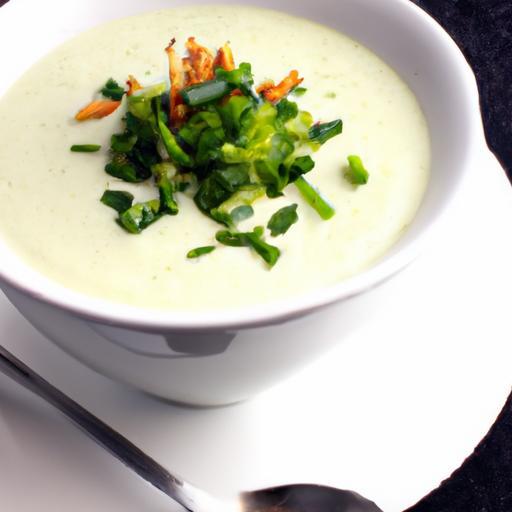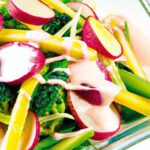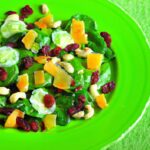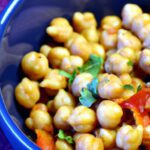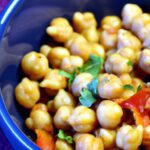In the rhythm of our busy lives, what we eat isn’t just fuel-it’s the spark that ignites our energy, focus, and vitality. Welcome to the world of complex carbohydrates, the unsung heroes of nutrition that keep our bodies humming steadily throughout the day. “Fuel Up Right: Crafting Simple Meals with Complex Carbs” invites you on a flavorful journey to discover how easy it can be to nourish yourself with smart, satisfying meals. From hearty grains to vibrant vegetables, learn how to blend simplicity with nutritional power, transforming your kitchen into a powerhouse of sustained energy and well-being. Ready to fuel your life the right way? Let’s dive in.
The Power of Complex Carbs for Sustained Energy
Fuel Up Right: Crafting Simple Meals with Complex Carbs invites you on a flavorful journey that celebrates the richness of whole grains and legumes, foods that have sustained cultures for centuries. Imagine the nutty warmth of quinoa mingling with tender chickpeas, or the satisfying bite of farro balanced by creamy avocado – each bite fueling your day with slow-releasing energy and nourishing your body deeply. These nutrient-dense complex carbohydrates not only delight your palate but provide the steady stamina demanded by busy lives.
Prep and Cook Time
- Preparation: 10 minutes
- Cooking: 30 minutes
- Total Time: 40 minutes
Yield
Serves 4 generous portions
Difficulty Level
Easy – perfect for everyday meals with minimal fuss
Ingredients
- 1 cup quinoa, rinsed thoroughly
- 1 cup cooked chickpeas (or one 15-ounce can, drained and rinsed)
- 1 cup baby spinach, chopped
- ½ cup diced red bell pepper
- ¼ cup chopped fresh parsley
- ¼ cup crumbled feta cheese (optional)
- 3 tbsp extra virgin olive oil
- 2 tbsp fresh lemon juice
- 1 tsp ground cumin
- ½ tsp smoked paprika
- Salt and freshly ground black pepper, to taste
Instructions
- Cook the quinoa: In a medium saucepan, combine the rinsed quinoa and 2 cups of water. Bring to a boil, then reduce heat to low, cover, and simmer for 15 minutes or until the water is absorbed and quinoa is fluffy. Let it rest covered for 5 minutes, then fluff with a fork.
- Prepare the chickpeas and veggies: While quinoa cooks, rinse and drain chickpeas. Dice red bell pepper and chop spinach and parsley finely for freshness and color.
- Mix dressing: Whisk together olive oil, lemon juice, ground cumin, smoked paprika, salt, and black pepper in a small bowl. Taste and adjust seasoning as desired.
- Combine all ingredients: In a large bowl, gently toss the cooked quinoa, chickpeas, chopped vegetables, and parsley with the dressing until everything is evenly coated.
- Add the finishing touch: Sprinkle crumbled feta cheese on top and give the salad one last gentle mix just before serving.
Tips for Success
- Variation: Swap quinoa for farro, barley, or brown rice to change the texture but keep complex carbs powerful.
- Protein boost: Add grilled chicken or baked tofu for extra protein, balancing the meal perfectly.
- Make-ahead: This salad tastes even better after resting in the fridge for an hour as flavors meld beautifully.
- Storage: Keeps well for 2 days in an airtight container-ideal for meal prepping.
- Flavor tip: Toast quinoa lightly in a dry pan before boiling for an extra nutty aroma.
Serving Suggestions
Serve this vibrant quinoa and chickpea salad chilled or at room temperature in colorful bowls that showcase the jewel-tone reds and greens. Garnish with fresh parsley sprigs or a wedge of lemon for brightness.
Pair with a side of warm, whole-grain flatbread for scooping, or top with sliced avocado to add luscious, healthy fats.
| Nutrient | Per Serving |
|---|---|
| Calories | 320 kcal |
| Protein | 12 g |
| Carbohydrates | 42 g |
| Fat | 10 g |
For a deeper understanding of the benefits of whole grains and legumes, explore this Harvard Nutrition Source guide on whole grains.
Interested in expanding your repertoire of complex carb dishes? Discover more inspiration in our Wholesome Grain Recipes collection.

Q&A
Q&A: Fuel Up Right – Crafting Simple Meals with Complex Carbs
Q1: What exactly are complex carbohydrates, and why should I care about them?
A: Complex carbohydrates are long chains of sugar molecules found in foods like whole grains, legumes, and vegetables. Unlike simple carbs that cause quick spikes in blood sugar, complex carbs digest slowly, providing steady, sustained energy. They’re essential for fueling your body efficiently, keeping hunger at bay, and supporting overall health.
Q2: How do complex carbs benefit my daily energy levels?
A: Because complex carbs break down gradually, they help maintain balanced blood sugar levels and keep energy consistent throughout the day. This means fewer energy crashes and improved mental clarity – perfect for powering through busy mornings, workouts, or afternoon slumps.
Q3: Can you give examples of simple meals that highlight complex carbs?
A: Absolutely! Think of a hearty quinoa salad tossed with roasted veggies and chickpeas, or whole-grain toast topped with mashed avocado and a sprinkle of seeds. Another favorite is a bowl of lentil soup paired with a slice of whole-wheat bread. These meals are quick to prepare but rich in fiber, vitamins, and lasting energy.
Q4: How can I make my meals richer in complex carbs without sacrificing flavor?
A: The secret is in combining wholesome ingredients with vibrant herbs, spices, and healthy fats. For example, add cinnamon to oatmeal or paprika to roasted sweet potatoes. Use olive oil or avocado to boost taste and satiation. Mixing textures – like crunchy nuts with creamy hummus – also creates a delightful eating experience.
Q5: Are there any common pitfalls to avoid when crafting complex-carb meals?
A: Yes! One common mistake is pairing complex carbs with too much added sugar or unhealthy fats, which can negate their benefits. Also, relying solely on carbs without sufficient protein or fat can leave you less satisfied. Aim for balanced plates where complex carbs share the spotlight with lean proteins and good fats.
Q6: How can complex carbs fit into special diets, like vegan or gluten-free?
A: Many complex carb sources are naturally vegan, like brown rice, beans, and sweet potatoes. For gluten-free diets, options like quinoa, buckwheat, and millet shine. Experiment with these staples to create diverse, tasty, and nourishing meals that meet your dietary needs.
Q7: What’s the best time to enjoy complex carbs for optimal benefit?
A: Complex carbs are a great choice any time of day – breakfast, lunch, or dinner – but they’re especially effective before physical activity. They provide the slow-burning energy needed for endurance and performance. Also, after exercise, complex carbs help replenish glycogen stores alongside protein for recovery.
Fueling your body right doesn’t have to be complicated. By embracing simple meals enriched with complex carbohydrates, you create a foundation for sustained energy, better health, and vibrant living. Ready to simplify your plate and power up your day? Let complex carbs lead the way!
Closing Remarks
As you embark on your journey to fuel up right, remember that crafting meals with complex carbohydrates isn’t just about nutrition-it’s about elevating your everyday plate into a powerhouse of sustained energy and vibrant health. By embracing whole grains, legumes, and fiber-rich veggies, you set the stage for a body that performs at its best and a mind that stays sharp and focused. Simple to prepare yet mighty in their benefits, these meals remind us that good fuel can be both delicious and doable. So next time you plan your meal, think beyond quick fixes-choose complexity in your carbs, and watch how your vitality transforms, one wholesome bite at a time.
